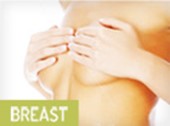Eyelid Rejuvenation
Blepharoplasty is done to remove or reposition excess skin, fat and muscle from the upper and/or lower eyelids. Eyelid surgery can correct drooping upper lids and puffy bags below your eyes – features that make you look older and more tired than you feel, and which may even be interfering with your vision. It will not, however, remove crow’s feet or other wrinkles, or lift sagging eyebrows. Blepharoplasty can be done alone, or in conjunction with other facial surgery procedures such as a facelift or brow-lift.
Who is a candidate for blepharoplasty?
The best candidates are women and men who are physically healthy, psychologically stable, and realistic in their expectations. Most are 35 or older, although you may require surgery earlier if you have a strong family history of baggy eyelids.
A few medical conditions make blepharoplasty more risky. These include thyroid problems such as hypothyroidism and Grave’s disease, dry eyes or lack of sufficient tears, high blood pressure (uncontrolled) or other circulatory disorders, cardiovascular disease and diabetes. A detached retina or glaucoma are also reasons for caution.
The consultation
At the first consultation, I like you to tell me in your own words what it is that worries you about your eyelids and to define the problem(s) as you see them. It is important to be honest and forthright as surgery is tailored around your concerns.
Since the function of the eyelids is to protect the globe (eyeball), it is important to establish that your visual function is normal. I need to know if your vision is normal or if you use lenses or have had correction (glasses, contact lenses, refractive or laser surgery). I also want to know if you suffer from dry eyes, excess tearing or any other vision related problems. Your motivation, goals and expectations with regard to the surgery will also be discussed.
Your eyes and lids will be carefully examined to assess the quantity of excess skin and fat, the quality of the muscle and the bony relations to the eyeball. Your suitability and fitness for surgery will be evaluated.
Following assessment, we will discuss all available options and formulate an operative plan, including type of surgery and anaesthesia to be used. In consultation, we will decide whether all four lids require surgery or just upper or lower. Other facial procedures may in addition be advisable for a harmonious result. Risks and complications, and recovery after surgery will also be discussed.
It is important that prior to surgery you are clear as to what surgery will entail. Please ask questions about any aspect of our discussions - a well informed patient will cope better with surgery.
Peri-operative care
I always perform blepharoplasties in an operating theatre. I usually do the procedure as a day case in the morning, allowing you home later that afternoon. Sometimes you will need to stay overnight, especially if you have had additional surgery to other areas.
Preparing for surgery
Very little preparation is necessary for surgery. If you are well informed and know what to expect, if you are fit and healthy, if your reasons for surgery are good and your expectations realistic, you will be more likely to be happy with the outcome. Smoking is generally unhealthy, but in particular interferes with normal blood flow and wound healing. I would therefore recommend that for any surgery, blepharoplasty in particular, you stop smoking 6 weeks beforehand and you refrain from smoking for three weeks afterwards. Although nicotine replacement products such as the spray, patch or gum are of great assistance, these products also adversely affect wound healing and should be avoided for the same period.
You will be unable to drive for a week following the procedure and you should arrange for someone to collect you from the hospital to take you home. There should be a responsible adult to look after you on the night of surgery. Hospital admission can be arranged if you feel this is necessary. Do not apply make-up on the day of surgery. On the day of surgery, you should be healthy and not suffering from flu or any other illness. All cosmetic surgery is elective and it is better to delay surgery than to tempt problems. You should arrive at the hospital on the morning of surgery having fasted and being nil by mouth for six hours. Your eyelids will be bruised and swollen after surgery and you might find that your eyes are sensitive to light.
It is a good idea, therefore to bring a pair of good quality sunglasses to wear afterwards.
Anaesthesia
I usually perform upper eyelid blepharoplasty under local anaesthesia, but general anaesthesia is fine too. It is advisable to have lower eyelid blepharoplasty under general anaesthetic.
What does the surgery entail?
One pair of lids (upper or lower) usually takes 1 to 1 ½ hours operating time. All four lids take usually about 2 hours, depending on the extent of the surgery. If I do all four lids, I usually do the uppers followed by the lowers. I will place marks on your eyelids, and take pre-operative photographs. You will then be escorted to the operating theatre.
After infiltration of the local anaesthetic, once the tissues are numb, the incision is made. This follows the natural lines of your eyelids – in the crease of your upper lids and just below the lashes in the lower lids. The incisions usually extend into the crow’s feet or laugh lines at the outer corners of your eyes. The skin is then separated from the underlying fatty tissue and muscle and excess fat is removed or repositioned, depending on requirements. The skin is then re-draped over the lid and any excess removed prior to closure. Closure is done using a fine suture, which is removed on about day 5 after surgery.
Adjuvant procedures may be performed especially in relation to the lower lid. These include lower lid horizontal tightening if the lid has a tendency to fall away from the eyeball and malar fat suspension if you suffer from dark rings below the eye. Some patients have very little lower lid skin excess and their problem is predominantly an excess of fat. In these cases a trans-conjunctival blepharoplasty may be performed in which the incision is made on the back of the eyelid, leaving no visible scar. Other procedures such as facelift/necklift can accompany eyelid rejuvenation.
What can one expect after the operation?
After surgery an antibiotic eye lubricant is usually applied and a light dressing placed over the incisions. As the anaesthetic wears off, your eyelids may begin to feel tight and sore, but you can control any discomfort with the pain medication that will be prescribed. In most cases the pain is mild and tolerable. If the pain is severe, this indicates a problem requiring treatment.
You should avoid straining and bending following surgery and plan to take things easy for the first week afterwards.
Swelling and bruising varies from person to person, usually peaking during the first week, and mostly gone by three weeks after surgery. To diminish swelling and bruising, you should keep your head elevated for the first few days after surgery. This means sleeping or resting in a slightly sitting up position. Cold compresses and ice packs will also help tremendously and they will be soothing on your eyes. Your eyes may be gummy for a week or so, or they may feel dry, hot or itchy. For the first few weeks you may also experience excessive tearing, sensitivity to light and temporary changes in your eyesight, such as blurring or double vision.
How long does it take to get back to normal?
You should be able to read or watch television comfortably after two or three days. However, you will not be able to wear contact lenses for about two weeks, and even then they may feel uncomfortable for a while.
Most people feel ready to go out in public (and back to work) in a week to ten days. By then, depending on your rate of healing, you will probably be able to wear make-up to hide the bruising that remains. You may be sensitive to sunlight, wind, and other irritants for several weeks, so you should wear sunglasses and a sunblock when you go out.
Try to keep your activities to a minimum for three to five days and avoid more strenuous activities for about three weeks. Your body needs to heal. It is especially important to avoid activities that raise your blood pressure, including bending, lifting and rigorous sports. Try and avoid alcohol since it causes fluid retention. Most people return to work between 7 and 14 days after surgery. You should not drive for about a week. It is also advised that you are able to fly short haul 2 weeks after the operation and that you can fly long haul 4-6 weeks post-operatively.
What are the risks of eyelid surgery?
When eyelid surgery is performed by a qualified plastic surgeon, complications are infrequent and usually minor. Nevertheless, there is always the possibility of complications:
Bruising, Swelling, Bleeding, Haematoma: Bruising and swelling may last from 3 to 6 weeks and due to gravity may descend lower down into the face. Your eyes will look a bit puffy. Recovery depends upon your type of skin, age and healing ability. Bleeding is usually minimal. Oozing after a blepharoplasty is normally from the small blood vessels leaking - which will in turn result in bruising. The bleeding remains usually within the eyelid area and does not extend deeper into the orbit. This bleeding may form a clot, and although these superficial hematomas are not a threat to the patient's vision, they may impede healing time. Retro-bulbar hematoma is a rare but serious complication. The symptoms and signs are increasing pain in the eye, bulging of the eyeball (known as proptosis) and the sight in the affected eye may be affected. It can lead to visual impairment and loss of vision (risk 0.04%) due to a build up of blood in the socket behind the eyeball, which is not addressed in a timely manner. Most surgeons who are experienced in blepharoplasty surgery will be able to recognize this complication and treat it immediately - which will save the sight in the eye.
Infection: This is a risk with any surgical procedure that is performed. Blepharoplasty performed under sterile conditions, however, rarely result in a serious infection due to the eyelid's good blood circulation. Reported incidence of infections with blepharoplasty is between 0.2 - 0.9%. If there is persistent redness, swelling, and pain 8 - 10 days post operative, then an infection might be present.
Dry Eyes, Double Vision, Blurred Vision: After your surgical procedure it is very important to keep the eyes lubricated. The eye-drops or ointment which you will be prescribed will help with the dry eyes after surgery. Some patients have double vision for several days following surgery, this is normal and your vision will return to normal within a couple of days. Vision might be blurry after having eyelid lift surgery because of the ointment that is used to lubricate and protect the eyes.
Epihora (Watering of Eyes): This is common after this surgery and is caused by a blockage of the nasolacrimal ducts due to swelling. If this condition does not resolve spontaneously antibiotic and/or steroid drops may be needed.
Asymmetry: Faces are not symmetrical. Minor asymmetries are normal after blepharoplasty. If the asymmetry is severe, it might be that there was too much tissue that was removed from one eyelid.
Scarring: Normally blepharoplasty will leave a tiny pencil fine scar line, which is barely noticeable.
Milia (White-Heads): Tiny white-heads (blocked glands) can appear along the healing incision line after your stitches are taken out. Most of the time, the small milia usually disappear spontaneously or can be removed simply with a very fine needle.
Damage to Lacrimal Gland or Tear Duct System: If the main tear producing gland is injured during the blepharoplasty - prolonged swelling in the outer portion of the upper eyelid might be persistent for several weeks. Injury of the tear drainage canal (tear duct) is very rare, but requires immediate repair by an ophthalmologist.
Ectropion: This complication is the pulling down of the lower lid from its normal position on the globe (eyeball). Ectropion is caused by removal of too much eyelid skin. Sometimes this can be a temporary condition which will improve to normal once the swelling subsides. If this is not the case, then surgical correction is suggested. The surgical procedure to fix ectropion can sometimes be a challenge, and could include grafting of donor skin or reinforcement of the eyelid with a canthoplasty. Ms Grob therefore performes a lower lid horizontal tightening with every lower lid blepharoplasty if the lid has a tendency to fall away from the eyeball.
Lagophthamlos: The eyelid may not be able to close properly after surgery. Insufficient eyelid closure can sometimes compromise the integrity and health of the eye. While milder cases may respond to massage, advanced cases require the grafting of skin.
Ptosis, Ptosis may be caused by injury to levator muscle or its tendon. Mild ptosis can resolve itself without any kind of surgical intervention over a period of two to four weeks. If the ptosis is not resolved by that time, then a surgical procedure with an eyelid specialist might be indicated.
Are the results permanent?
The expected improvement with eyelid surgery can be dramatic – It is said that the eye is the window to the soul – improved appearance of the peri-orbital region can make you look less tired, less sad, and younger. Surgery however cannot stop the ageing process – with a balanced diet, healthy lifestyle, and sun protection the results should last over 10 years.
Checklist before coming into hospital
- Make sure I know all the medications you are taking before surgery.
- Do not take any Aspirin or blood thinning drugs (which include some homeopathic supplements) for at least 2 weeks prior to surgery. Paracetamol is safe.
- Oral contraceptives can increase the risk of Deep Vein Thrombosis or Pulmonary Embolism. The contraceptive "pill" should ideally be stopped a month prior to surgery but please use some alternative form of contraception.
- It is advisable not to smoke six weeks prior to surgery and until complete healing has taken place. Nicotine reduces oxygen levels required for wound healing.
- Please have a shower in the morning of surgery and do not apply deodorant or any other products (e.g. body lotion, perfume, make-up, Mascara etc.)
- Please do not have anything to eat (including chewing gum) 6 hours prior to surgery. You are able to drink still clear water up to 2 hours prior to your admission.





